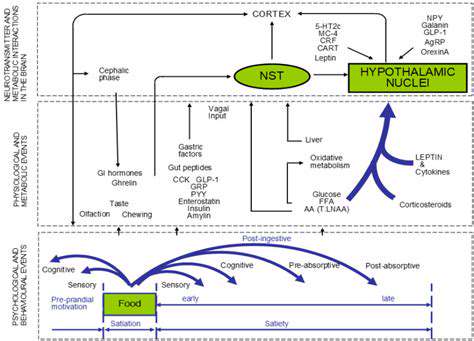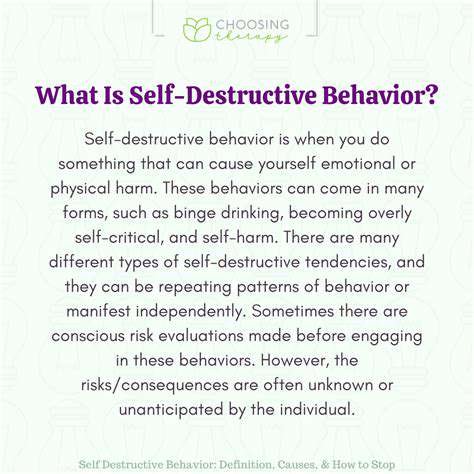How to spot signs of depression in dogs
Changes in Appetite and Energy Levels

Changes in Appetite
When a dog's eating habits shift noticeably, it often signals something deeper than just pickiness. Whether the change happens overnight or creeps in gradually, paying attention to these details can reveal whether it's a passing phase or something requiring veterinary attention. Beyond illness, everyday stressors like thunderstorms or household changes can turn a food-loving pup into a reluctant eater. Some dogs even experience appetite swings due to seasonal changes or aging. Keeping a simple notebook tracking what, when, and how much your dog eats creates valuable data for your vet.
Appetite fluctuations sometimes come with subtle clues we might miss. A dog who leaves kibble but devours chicken could be developing dental pain rather than being fussy. That hungry dog constantly begging might actually have a thyroid issue or diabetes rather than just loving food. These nuances matter because early detection often means simpler treatment. Documenting not just quantity but enthusiasm during meals helps paint the full picture.
Impact on Energy Levels
The food-energy connection works both ways - a dog skipping meals becomes lethargic, while one overeating might seem sluggish from digesting large amounts. Watch for mismatches, like a dog eating normally but acting exhausted, which could indicate pain or anemia rather than dietary issues. This energy-appetite dance varies by breed too; a Border Collie slowing down warrants different concern than a Bulldog's typical laziness.
Energy crashes after meals might suggest blood sugar issues, while constant fatigue despite good eating could point to heart problems. Don't overlook environmental factors either - that lazy summer dog might just be overheating rather than sick. Tracking energy patterns alongside appetite changes helps separate health concerns from normal fluctuations.
Underlying Medical Conditions
Several illnesses disguise themselves as simple appetite or energy changes. A previously food-motivated dog ignoring treats could have early kidney disease, while sudden excessive hunger might signal Cushing's disease. Vets often say the body's first cry for help comes through changed eating or activity patterns before lab tests show abnormalities. This makes owner observations invaluable for early diagnosis.
Conditions like arthritis manifest subtly - a dog may eat less because standing at the bowl hurts, not from lost appetite. A thorough vet exam should include discussion of all changes, even seemingly minor ones like taking longer to finish meals or new preferences for soft foods. Sometimes the smallest behavioral shift holds the diagnostic key.
Dietary Changes and Habits
Switching foods too quickly can cause appetite issues unrelated to health. Some dogs protest new flavors by hunger striking, while others overeat unfamiliar foods. The bowl itself matters too - elevated feeders help arthritic dogs, while slow-feed bowls prevent gulping. Even water access affects eating; a dehydrated dog may ignore dry food but eagerly eat wet varieties.
Stress and Emotional Factors
Canine emotions directly impact eating behaviors. A dog mourning a companion animal might stop eating their shared meals, while anxiety from construction noise could cause stress-eating. These emotional connections mean appetite changes sometimes require behavioral solutions rather than medical ones. Creating predictable routines and safe spaces often helps more than dietary adjustments alone.
Hormonal Imbalances
Unspayed females experience cyclical appetite changes during heat cycles, while neutered males may develop increased hunger from metabolic shifts. Recognizing these patterns prevents unnecessary worry - that hungry spayed dog isn't being greedy; her body's processing nutrients differently post-surgery. Thyroid issues particularly disrupt this balance, causing either ravenous hunger or complete disinterest in food despite weight changes.
Lifestyle Factors
Modern dog lifestyles contribute significantly to appetite and energy patterns. Urban dogs confined indoors may eat from boredom rather than hunger, while under-exercised working breeds often show depressed appetites from unmet activity needs. The solution sometimes lies not in the food bowl but in adjusting daily walks, play sessions, or mental stimulation to restore natural rhythms.
Changes in Social Interaction and Playfulness
Changes in Social Interaction
Canine social behavior changes can be as nuanced as human mood shifts. That once-gregarious pup avoiding dog park interactions might not be antisocial but could be experiencing vision loss or hearing impairment making socializing stressful. Some dogs develop selective social preferences with age, enjoying quiet time with familiar humans but avoiding boisterous puppies. These aren't necessarily problems unless accompanied by other symptoms.
Watch for context - a dog hiding during parties might just dislike noise, while one avoiding all contact could be in pain. Some breeds naturally become more reserved with age, while others remain puppy-like socially throughout life. Knowing your dog's baseline helps distinguish normal maturation from concerning withdrawal.
Loss of Interest in Favorite Activities
The key lies in understanding what favorite truly means to your dog. A Labrador refusing fetch might have shoulder pain rather than depression, while a terrier abandoning digging could indicate neurological issues. Sometimes the activity itself changes - an arthritic dog may still play fetch but now prefers rolling the ball back rather than chasing it.
Environmental factors matter too. That lazy dog avoiding walks in summer might simply overheat easily. Try varying activities - a dog ignoring toys might engage with scent games or vice versa. True depression usually affects multiple activity types, while physical discomfort tends to be activity-specific.
Changes in Eating Habits
Canine dining behaviors offer rich insights beyond simple consumption. A dog taking food to eat privately might feel vulnerable, not depressed, while one suddenly gulping meals could have dental pain making prolonged chewing uncomfortable. Some dogs develop quirky new preferences with age - enjoying warmed food or specific bowl placements - that reflect adaptation rather than illness.
Mealtime rituals provide clues too. A dog who circles excessively before eating might have orthopedic discomfort, while one who paws at the bowl could be experiencing vision changes. These subtle behavior modifications often precede obvious appetite changes and warrant attention.
Changes in Sleep Patterns
Canine sleep needs evolve with age and health. That lazy senior sleeping more might be normal, while a young dog's sudden daytime napping could indicate pain or illness. True concerning changes involve disrupted sleep-wake cycles - sleeping all day but restless at night often signals cognitive dysfunction in older dogs rather than simple aging.
Changes in Grooming Habits
A dog's self-care routine reflects overall wellbeing. Overgrooming one spot usually indicates physical discomfort there, while overall coat neglect might signal depression or systemic illness. Some long-haired breeds stop self-grooming when arthritic because twisting becomes painful. Regular brushing sessions become both health check and bonding opportunity.
Changes in Playfulness and Energy Levels
Play style evolution differs from play disinterest. An aging dog who now enjoys gentle tug instead of frenzied fetch is adapting, while one who abandons all play needs evaluation. Energy changes often appear first during specific activities - difficulty with stairs may precede general lethargy. Tracking which activities change first helps identify underlying causes.

- Essential Needs for Your Dog's Health and Happiness
- Recognizing Early Symptoms of Common Health Issues for Timely Intervention
- Navigating Essential Nutritional Needs for Optimal Health
- The best ways to train a dog to stop barking
- How to dry your dog after a bath without stress
- How to deal with a dog’s aggressive behavior
- Why hydration is crucial for active dogs
- How to identify stress related behaviors in dogs
- How to prevent overheating during long walks
- What to feed a dog recovering from illness
- How to recognize dental problems in dogs
- What to pack for a road trip with your dog